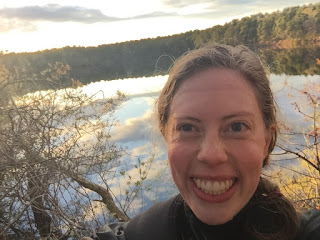Costa Nova
Costa Nova beach The workshop ended in mid-afternoon on the third day, so I had a chance to explore more around Aveiro. When I mentioned to another researcher that I was thinking of walking to the beach, he shook his head. I would have to walk along the highway, he said, but he was going to work in a café out there and would be happy to drive me. We grabbed one more researcher who was interested, hopped in the car, and headed to Costa Nova. Barra lighthouse in Costa Nova Driving out of Aveiro on the highway, we passed the Ria Aveiro estuary and large salt flats. Aveiro is on the coast, but the space between the town and the beach itself is filled with pools where seawater is evaporated to harvest salt – one of the major industries in Aveiro in historical and modern times. There has been trade between Portugal and Norway since about the 12 th century, with the Portuguese exporting salt and importing salted codfish. Striped homes in Costa Nova The beach reminded

